As photographers, we all know that you don’t always get to shoot at the exact time of day you would like to. However, thanks to off camera flash, you are not tied down by mother nature. Using flash can convincingly allow you to recreate different times of day and lighting situations.
There are many reasons why you would want to recreate natural lighting – sometimes the weather is not on your side or maybe your client wants that golden hour look but is only available at noon. Recreating the light during different times of the day is easy once you understand the type of light that people associate with specific times of day. The three key things to consider are color, direction (how high or low), and quality (how hard or soft the light is).
Midday Sun / Harsh Sun
When recreating midday sun (or harsh sun light), the most important thing to do is use a hard light source high above your subject to create very defined shadows. Since we were already shooting midday, you are probably wondering why I decided to use off-camera flash instead of natural light. One of the main reasons was simply due to the fact that it was a very hot day and we wanted to shoot in the shade to keep my subject as comfortable as possible. Another important reason for this choice was to use my off-camera flash to control precisely where the highlights and shadows were falling on our model’s face.
I knew I wanted more of a “beauty lighting” look, so I placed my strobe with a deep focus reflector in front of my subject and raised it up. I stopped just before where her eyelashes would create a shadow in her eyes and angled it towards her, making sure she still had a catchlight in her eyes. This is where the control of an off-camera flash really comes into play. For lighting, I used a deep focus reflector so I would get a small, tight beam of light that would emulate the hard shadows under the chin and cheekbones that I would get during afternoon sun. I also made sure to place my subject with her back to a brightly lit area so the sun would act as a second light source and add a hair light. This gave the shot a bright background for a bright sunlit look.
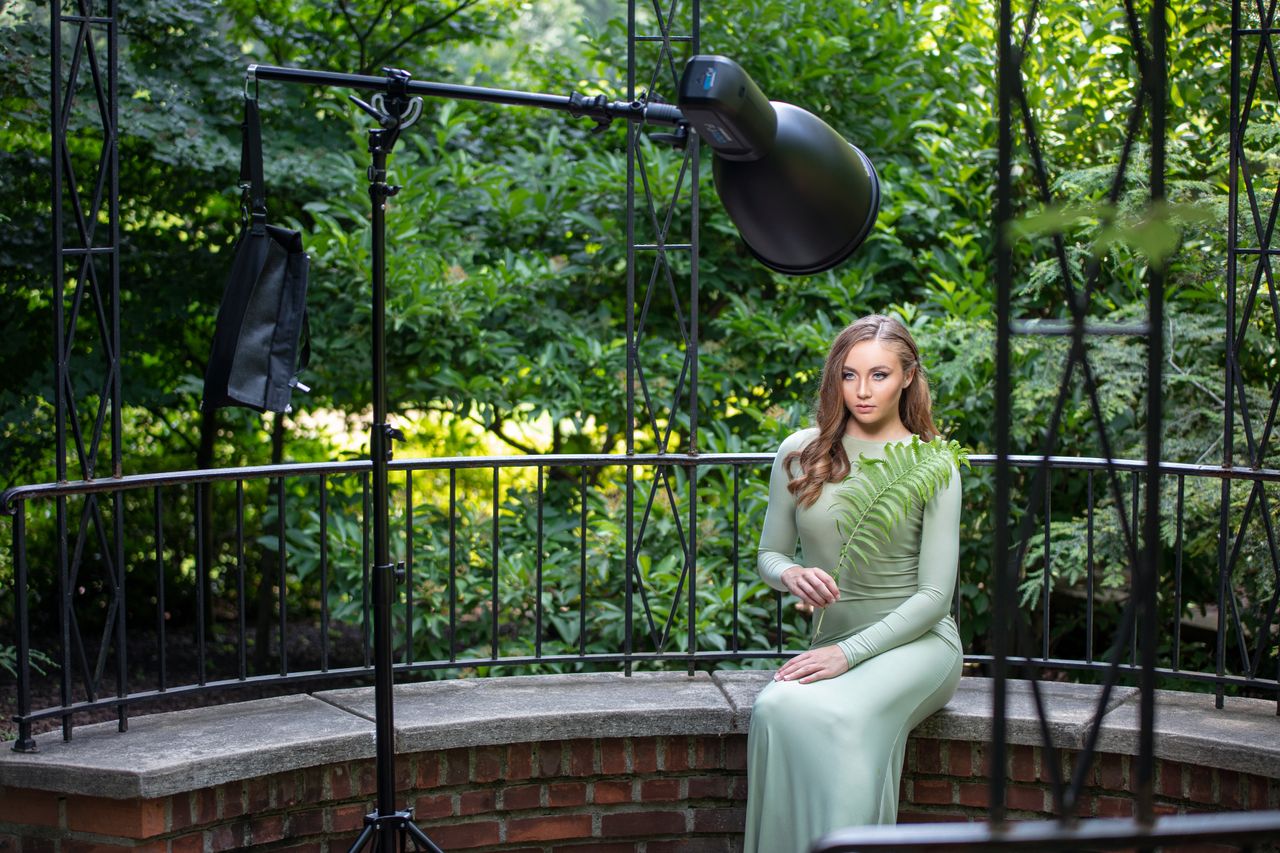
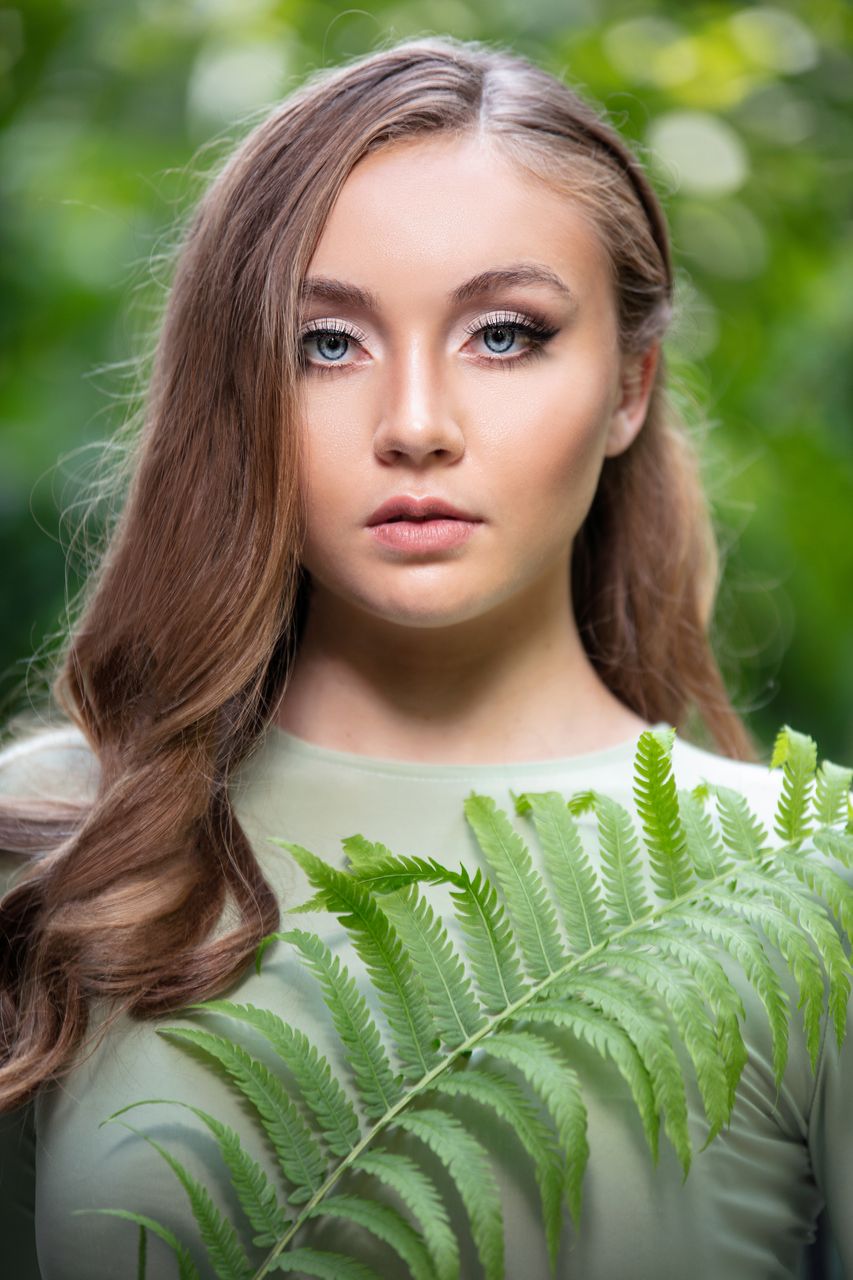
Blue Hour / Twilight
Blue hour is the time of day just after the sun has set, where the sky has a dark but vivid blue color. The key factor to emulating this time of day is the color of the ambient light. Although we cannot change the color of the sun, we can change the color of the light hitting our subject. By adding a tungsten gel to my main light, and white balancing my camera to tungsten, anything lit by daylight will turn to a blue shade. Another key factor is making sure to pick a background that is free of any bright areas. Then, expose your background darker than your subject. As far as lighting, I started by placing my main light (an FJ400 modified by a Rapid Box Octa-M) left of my subject and feathering it so the lighting would be soft and darker toward the ground. I then added a separate FJ400 with a 70-degree reflector as a hair light to separate our subject from the dark background. Again, I added a tungsten gel to the main light and set my camera white balance to tungsten. That way the light from my flash will be correctly white balanced and the ambient light (the sun) will turn a blue color. This is a great trick to have in your arsenal, since you can create two very different looks within seconds of each other, giving your clients more variety and options.
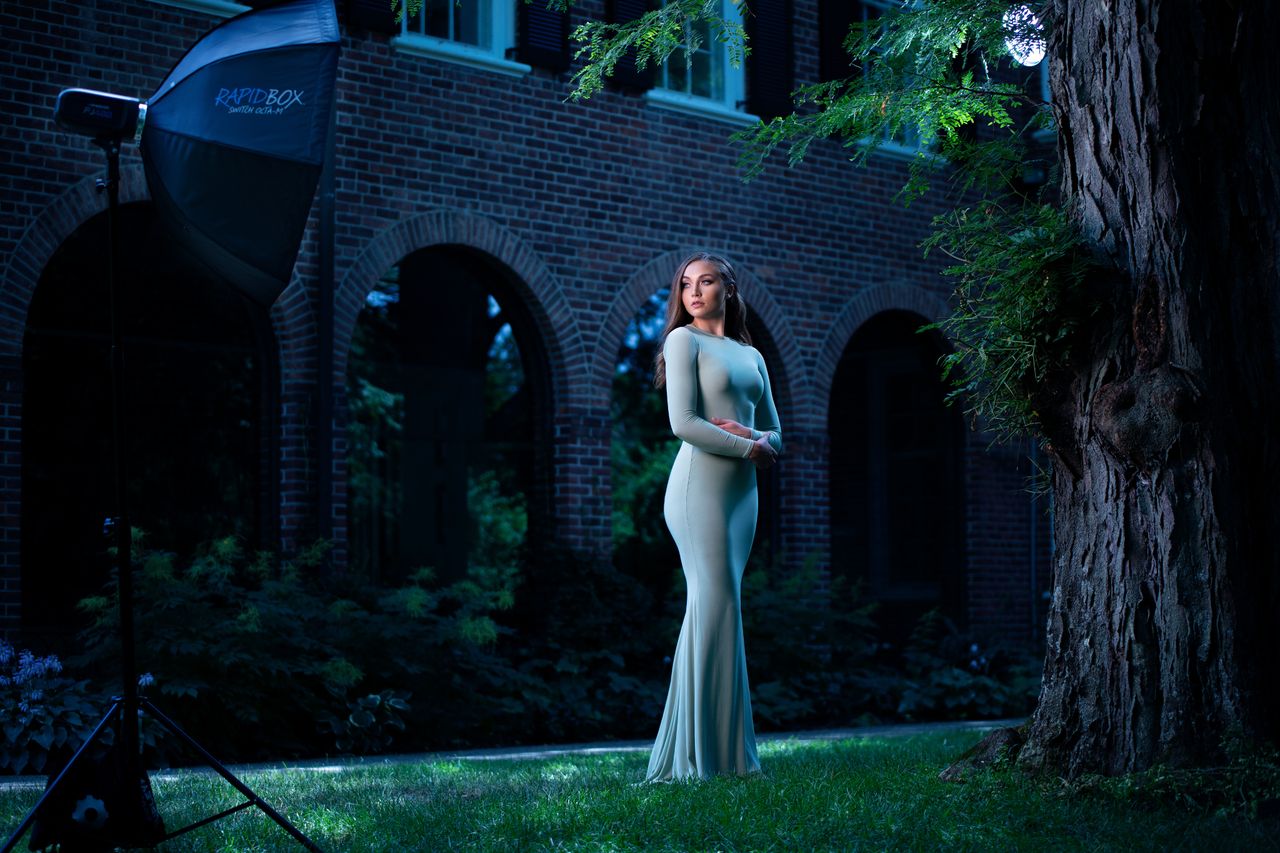
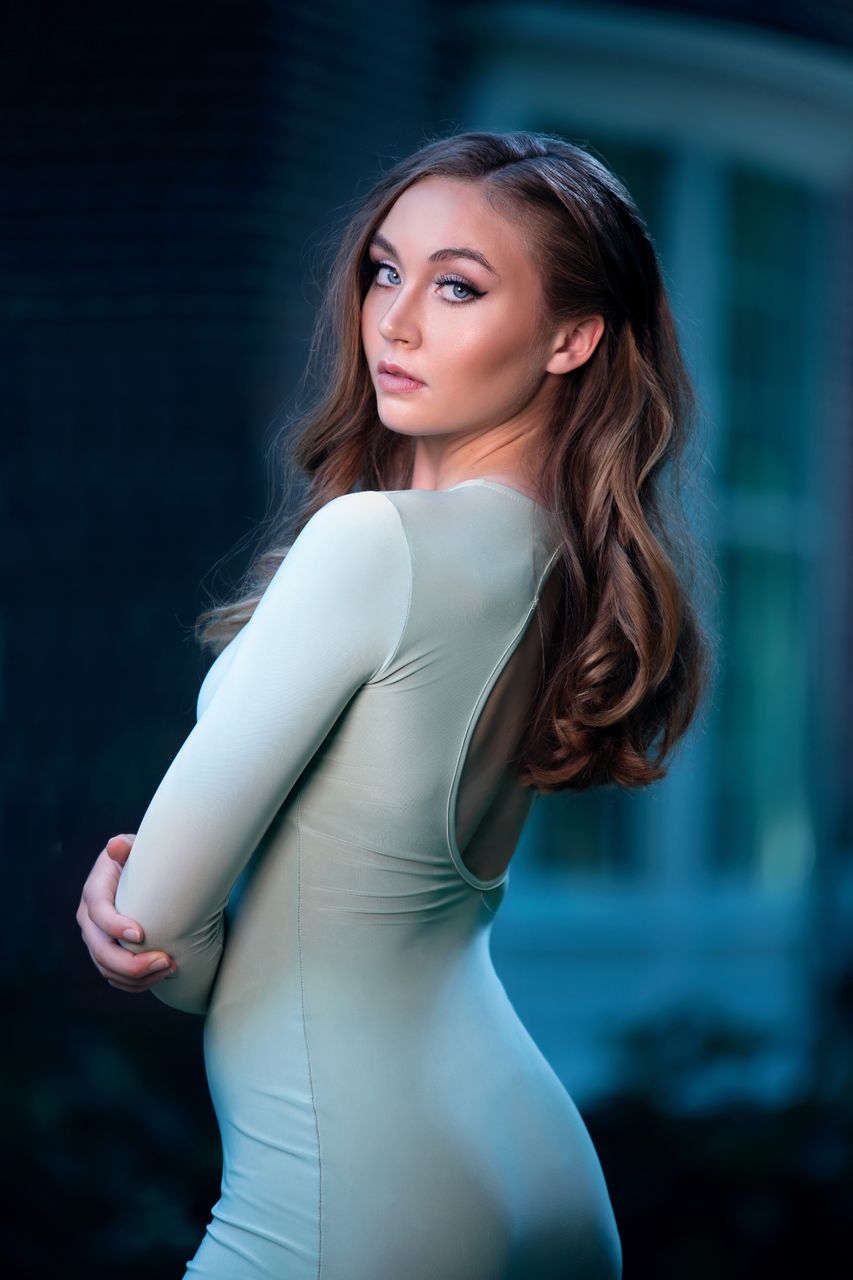
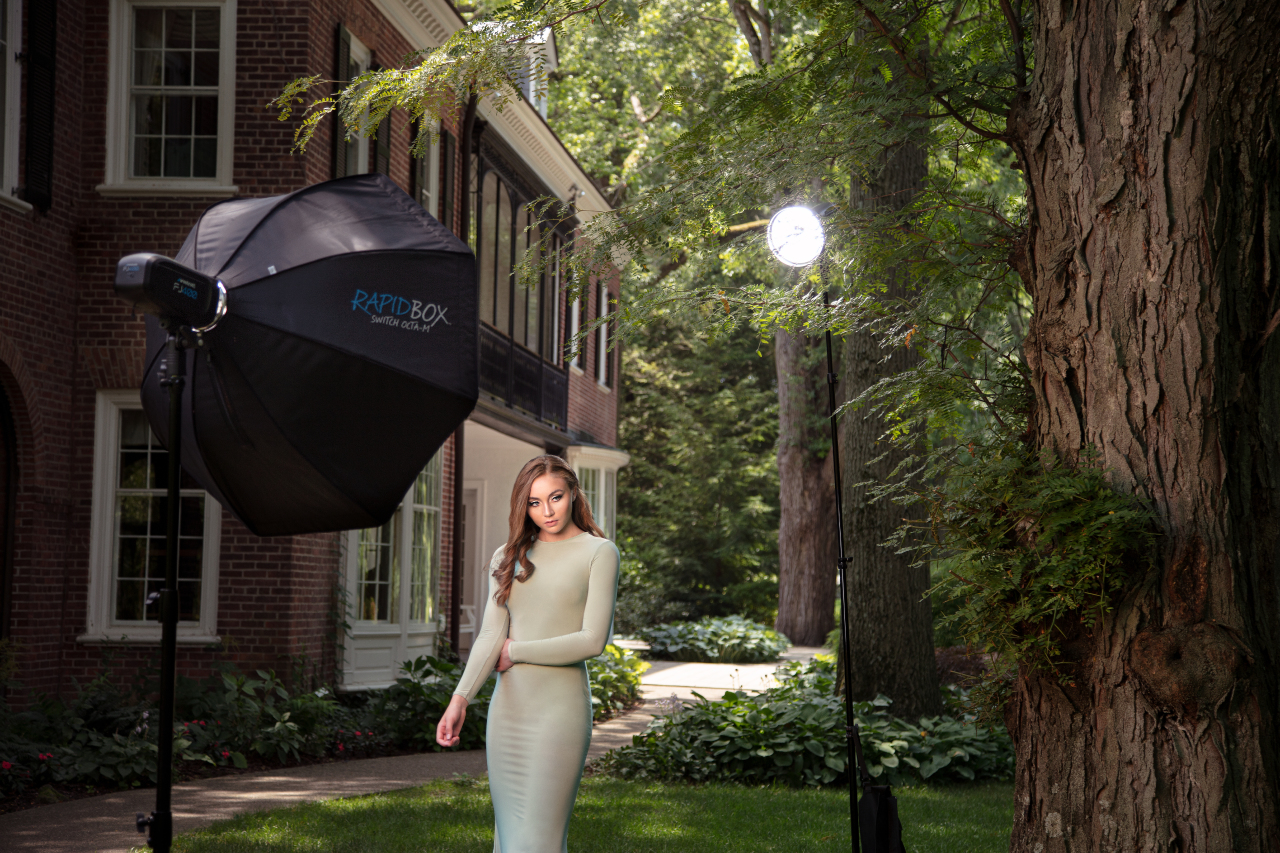
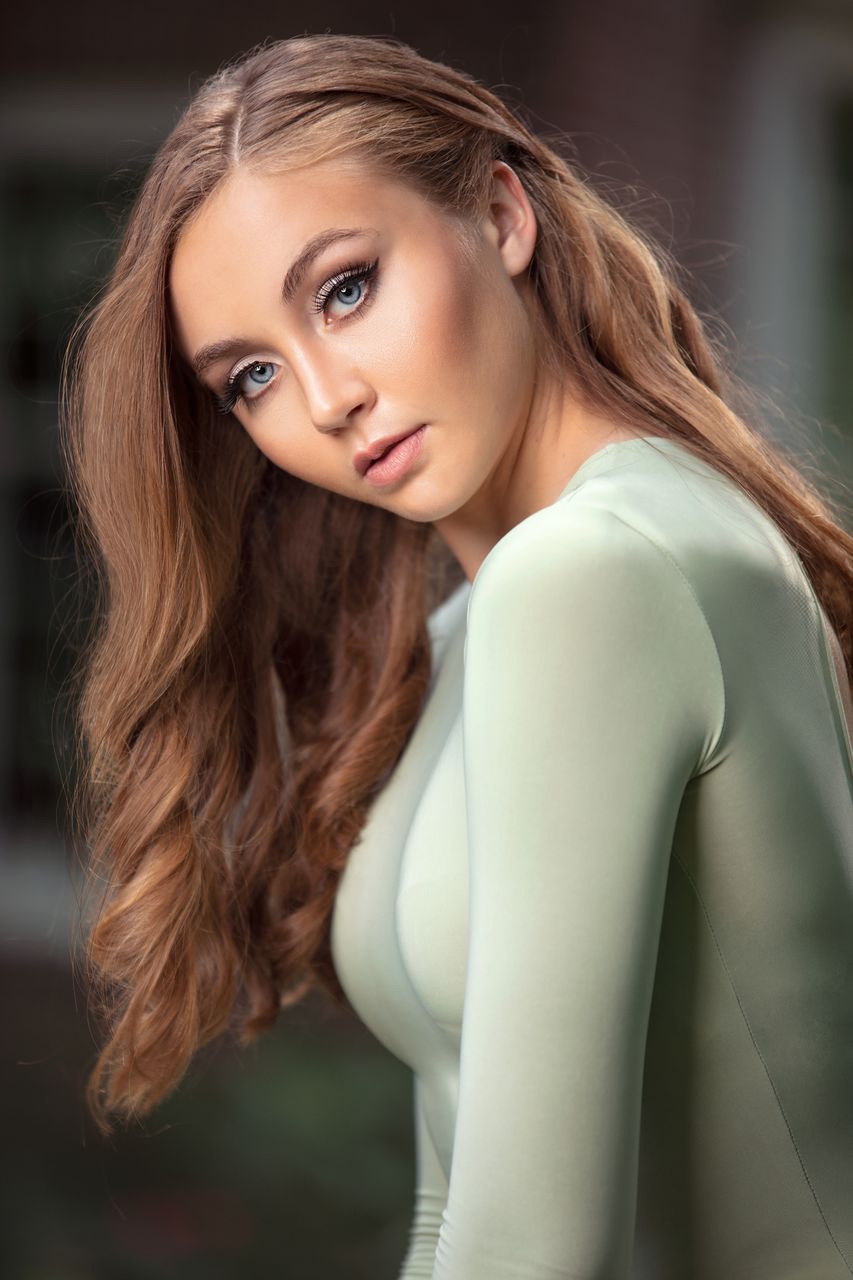
Golden Hour
When you think of golden hour photography, you picture the warm glow of light that backlights your subject. By using a tungsten gel and a 70-degree reflector, I recreated this type of lighting. I placed my light behind my subject just out of frame and angled slightly toward my camera so that the light would flare and give that warm golden glow. I then tilted the backlight up so that the light would not fall on the ground too much and overexpose the grass. I also used another FJ400 with a Rapid Box Octa-M to light my model’s face. The larger modifier allows the light to still be soft to blend in with my back light. It is important that the backlight is brighter than your main light so that your subject gets that backlit look that is popular at golden hour. Finally, I had someone throw a handful of dirt so it would be illuminated by the backlight and give the photo a sense of atmosphere.
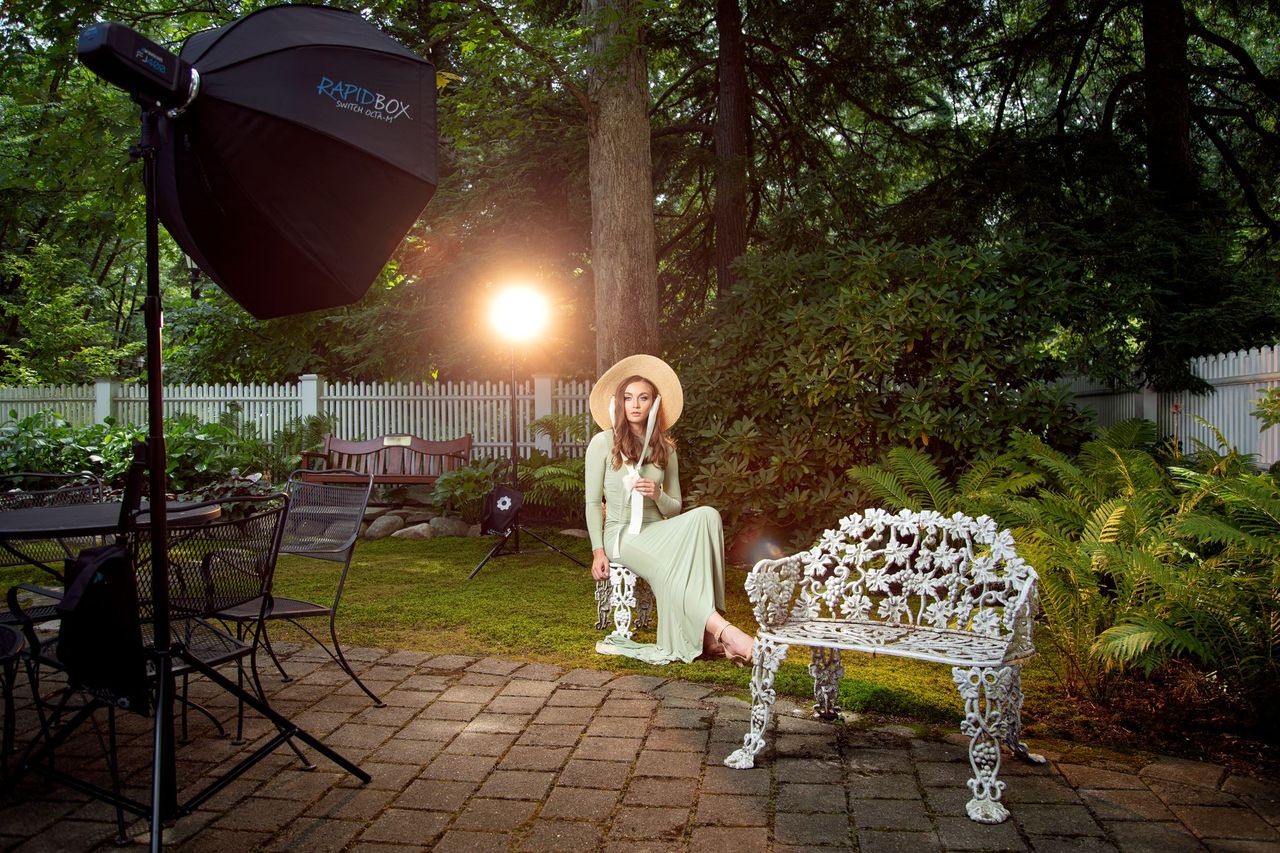
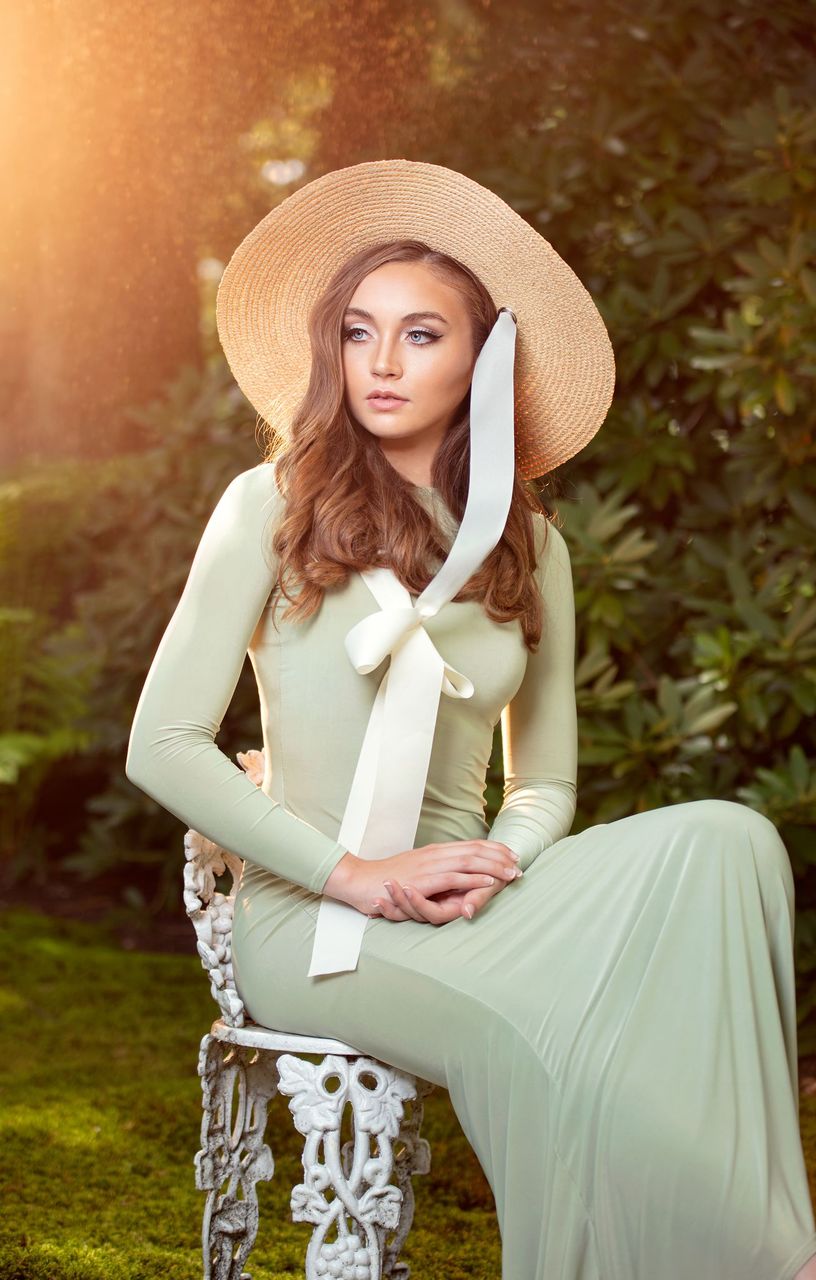
Takeaways
Recreating the light during different times of the day is easy as long as you keep in mind the three key factors of light: color, direction, and quality. Not only do you get more control, but you are also not tied down by weather or lighting conditions, giving you the freedom to shoot anywhere at any time and still get your desired look.
Learn how Ashley uses the FJ400’s front and rear curtain sync functions to create light trails here.
Lighting Gear in Action

Original FJ400 Strobe with AC/DC Battery (400Ws)4700
FJ-X2m Universal Wireless Flash Trigger4705

Original FJ400 Strobe with AC/DC Battery (400Ws)4700

FJ-X2m Universal Wireless Flash Trigger4705

FJ-X2m Universal Wireless Flash Trigger4705




You must be logged in to post a comment.